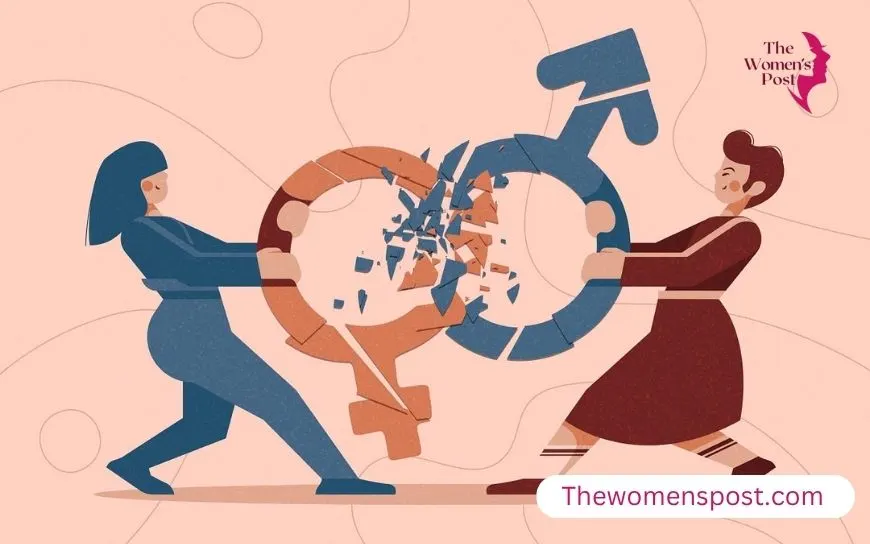The Impact Of Sex And Gender In Disease Diagnostics In Global Health

Women worldwide often face immense difficulties in securing timely and accurate diagnoses of their health conditions. The differences in how diseases present in women, compared to men, further combined with deep-rooted biases in healthcare systems, constitute a critical diagnostic gap that affects the health outcomes of women worldwide. Understanding these differences is key to ensuring better medical care for women and receipt of timely, appropriate treatment.
Why Women Face Delayed Diagnoses
Studies have shown that women always experience a delay in obtaining a diagnosis of diseases compared to men. Large-scale studies, which analyzed hundreds of thousands of patients, reported that women are usually much older when they receive a diagnosis for most conditions than is the case for men. It is observed that, on average, it takes eight more days to diagnose acute symptoms in women compared to men, while the time taken for long-term chronic conditions exceeds 50 days. This happens even when symptoms presented by women and men are similar, indicating that gender bias plays an essential role in the way healthcare professionals evaluate and diagnose health concerns among women. This diagnostic delay is the core of the impact of sex and gender on diagnosis of infectious and non-communicable diseases within global health and points toward changing gender norms and reducing barriers to accessing diagnostic tools within the global health setting.
Most diagnostic delays occur with women across many diseases, and there are documented delays in at least 700 different conditions. This may mean that a woman could have symptoms for months or even years before getting a proper diagnosis, during which time her condition may be getting worse and harder to treat. These disparities outline how the collection of sex- and gender-disaggregated data is necessary for better diagnostic outcomes in global disease control.
The Problem of Different Symptom Presentations
One major reason for diagnostic delays in women is that diseases oftentimes manifest differently in women than they do in men. Historically, health care providers and diagnostic guidelines have been based mainly on how diseases present themselves in men, since men dominated early medical research. When women show different symptoms or different patterns of symptoms, healthcare providers may not recognize these as a harbinger of serious illness.
For example, women experiencing a heart attack are more likely to have atypical symptoms such as extreme fatigue, shortness of breath, or nausea rather than the chest pain that men classically experience. Consequently, women are 50% more likely than men to be misdiagnosed after having a heart attack, with their symptoms often mistaken for anxiety or digestive problems rather than a cardiac emergency. This calls for gender-sensitive approaches in improving diagnostic accuracy and treatment outcomes globally.
Cardiovascular Disease: A Major Diagnostic Gap

Also Read: Thyroid Health In Women: How Hormonal Changes Impact The Gland
Despite being the leading cause of death among women around the world, heart disease is still considered a man’s disease. This misperception has grave consequences. Women receive fewer diagnostic tests for cardiovascular conditions, including coronary angiography and electrocardiograms, than men presenting with the same symptoms. Even when women are admitted to the hospital with heart disease, they are less likely to receive coronary interventions or be given preventive medications such as statins. In fact, underdiagnosis and undertreatment are direct reasons why women have worse outcomes than men in heart disease, including higher mortality rates after severe heart attacks. These issues point to the bigger picture of the impact of sex and gender on diagnosis of infectious and non-communicable diseases in global health.
Endometriosis and Women’s Reproductive Health
More properly known as “the missed disease,” endometriosis is a condition in which tissue like the uterine lining develops outside the uterus, largely remaining underdiagnosed around the world. While it is estimated that the condition affects about 10% of women and girls of reproductive age worldwide, only 2 out of 10 cases are diagnosed in the United States. Worldwide, the average time to diagnosis is over seven years, even longer for Black women. This delay leads too many women to face extreme pain and fertility complications without proper treatment or support. Such barriers to access illustrate a dire need to understand gender norms and challenges to diagnostic tool access in global health settings.
Autism and ADHD: Gender Bias in Psychiatric Diagnosis
Women are notably underdiagnosed for both autism and attention-deficit/hyperactivity disorder (ADHD). The autism diagnosis ratio is approximately three boys to every girl, although girls are usually diagnosed later in life or not at all. This occurs because girls often have different symptoms than boys or learn to “mask” their symptoms to fit social expectations. In addition, ADHD symptoms manifest differently in women, and the majority of the original research is about boys with the condition. The missed diagnoses in such cases are serious, since undiagnosed autism and ADHD in women may be followed by mental health problems, depression, and anxiety in adulthood.
Historical Research Bias: The Male Standard in Medicine
Diagnostic bias against women runs deep in the roots of medical history. Women were excluded from clinical trials and research as a policy of protection that took hold in the 1950s and 1960s. Men became the default model for medical knowledge; most drug tests, disease studies, and diagnostic guidelines were based wholly on how diseases appear and respond to treatment within male bodies. Even today, women remain underrepresented in specific areas of medical research, such as cardiovascular and drug studies. This male-centered approach to medicine is likely to mean that current diagnostic tools and clinical knowledge often poorly represent how diseases present themselves in women. Using sex- and gender-disaggregated data for improved diagnostic outcomes in global disease control is important for redressing this imbalance.
Access to Care and Socioeconomic Factors
Beyond diagnostic bias, women also have structural barriers to diagnosis. Women are more likely to be poor, which already limits their access to healthcare services. Moreover, limited access to preventive care means that many women do not receive early cancer screenings, immunizations, and health monitoring that might bring diseases to light earlier. Additionally, experiences of gender-based violence and discrimination adversely impact their physical and mental health, and some women may delay seeking medical attention for these reasons or because of a lack of trust in healthcare systems. Such barriers form part of the broader gender norms and barriers affecting diagnostic tool access in global health settings.
The Intersectional Nature of Diagnostic Disparities

Also Read: Women’s Sleep Disorders: Conquering Insomnia
Gender does not affect women’s health in isolation. Diagnostic disparities are compounded at the intersections of gender with other factors, including race, ethnicity, socioeconomic status, and age. Black women with endometriosis face even longer diagnostic delays compared to white women. These intersecting inequalities mean that some groups of women experience even greater barriers to accurate and timely diagnosis.
The Way Forward for Better Diagnostics
Addressing the diagnostic gaps requires health systems to incorporate gender-informed approaches, taking into consideration how diseases present differently in women. This includes updating the training curricula for healthcare providers to recognize sex and gender differences in symptoms, revising diagnostic guidelines to reflect symptom presentations in females, and increasing the involvement of women in medical research to ensure that evidence-based knowledge accurately reflects the ways in which diseases manifest in women. It therefore calls for countries to collect and analyze sex- and gender-disaggregated health data in order to bring disparities into sharper relief.
In addition, an increase in research on women’s health conditions, better access to diagnostic services for underserved populations, and active efforts to eliminate gender biases in clinical practice are also vital to ensure women receive equitable and timely care. In fact, the use of sex- and gender-disaggregated data to enhance diagnostic outcomes in the control of global disease burdens represents a critical step forward. Moreover, embracing the role that gender-sensitive approaches play in improving diagnostic and therapeutic outcomes worldwide will translate to better health for women everywhere.
Closing the gap in women’s health requires a commitment by health providers, researchers, policy makers, and health systems around the world to recognize that women and men are physiologically different and deserve healthcare approaches reflective of their distinctive needs and experiences. This commitment is central to improving global health and overcoming the impact of sex and gender on diagnosis of infectious and non-communicable diseases in global health.









